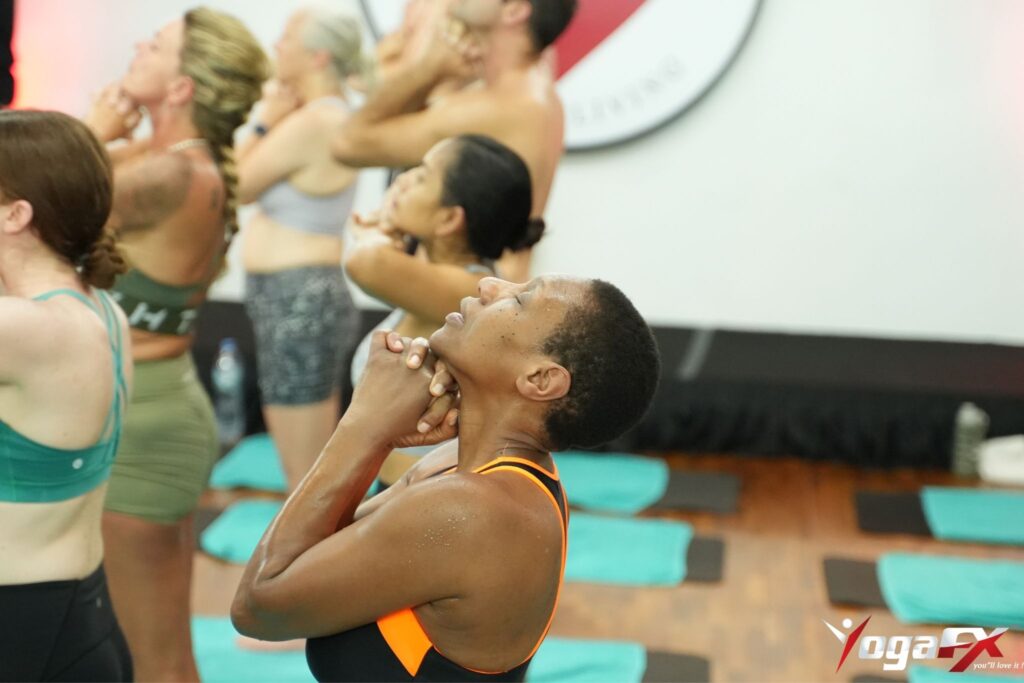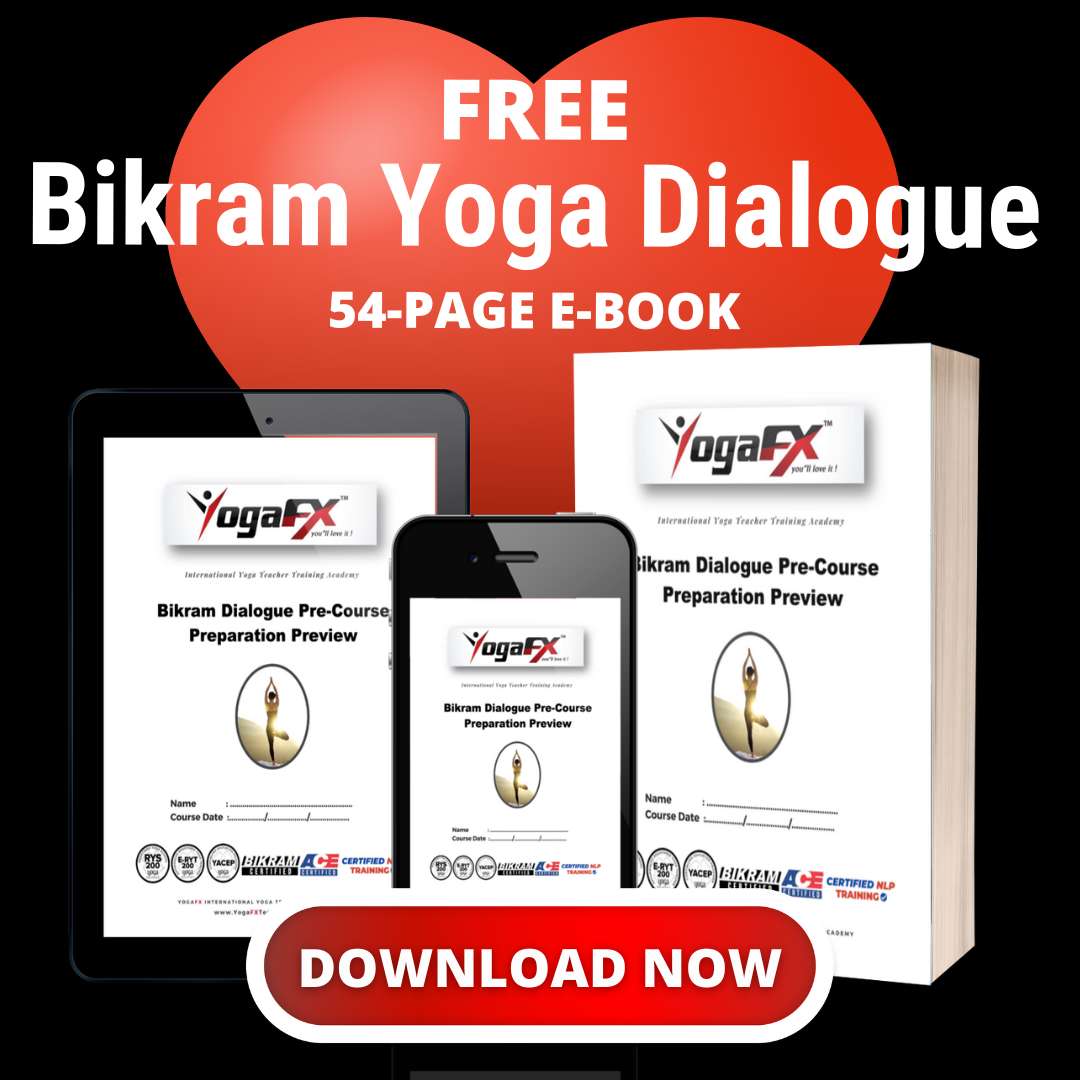In today’s fast-paced world, anxiety has become one of the most common mental health issues. Many people feel overwhelmed, tired, and emotionally drained. Daily stress—whether from work, relationships, or even social media—can take a toll on our mental health.
According to global health statistics, anxiety affects millions of people worldwide. Symptoms often include racing thoughts, muscle tension, irritability, sleep problems, and a constant sense of worry. While therapy and medication help many, others are turning to natural, body-mind practices for support.
One of the most powerful tools for calming the mind and body is Bikram Yoga. This form of yoga is done in a heated room, where students move through a series of 26 postures and 2 breathing exercises over a 90-minute class. The heat, the stillness, the repetition—it’s more than just physical exercise. For many, it’s therapy on a yoga mat.
What Harvard Says About Yoga and Mental Health
Harvard Health Publishing shared a study that shows yoga can really help with anxiety and stress. They said yoga, especially when it includes breathing and meditation, helps calm the nervous system. This makes it easier for the body and mind to relax.
The study also mentioned that yoga may improve brain functions like memory and focus. Over time, practicing yoga regularly can even help reduce symptoms of depression and anxiety.
This is great news if you’re feeling anxious or overwhelmed. Even just a few sessions of Bikram Yoga — with its set routine, heat, and focus on breathing — can give your mind a break and help you feel more in control.
How Bikram Yoga Helps Manage Anxiety
Yoga supports mental wellness through multiple mechanisms—working on the body’s inflammation levels, nervous system, hormones, and brain chemicals. Let’s explore how it works.
1. Reducing Inflammation in the Body
Many people don’t realize that anxiety isn’t just a mental condition—it’s also linked to inflammation in the body. Chronic inflammation can worsen mental health by disrupting the brain’s balance and stress responses.
Fewer Inflammatory Chemicals: Research shows that people with anxiety often have high levels of inflammatory markers like IL-6 and TNF-α. Yoga has been shown to lower these. Kiecolt-Glaser et al. (2010) found that yoga practitioners had fewer signs of inflammation
More Anti-Inflammatory Chemicals: On the flip side, yoga helps increase anti-inflammatory cytokines, which support better mood and immunity. Black et al. (2015) confirmed that yoga raises these healing compounds, helping reduce anxiety symptoms.
2. Balancing the Nervous System
When you’re anxious, your body lives in a constant state of “fight or flight.” That’s your sympathetic nervous system doing its job—but it can be harmful when always active. Yoga helps restore the balance by activating the parasympathetic nervous system, or the “rest and relax” mode.
Lowering Stress Responses: Practices like deep breathing and mindful movement lower heart rate and blood pressure. Brown and Gerbarg (2005) showed that yoga decreases sympathetic activity, promoting relaxation.
Boosting Calmness: Yoga also increases vagal tone—an important measure of how well your parasympathetic system works. Sharma et al. (2013) found higher vagal tone in yoga practitioners, indicating better emotional resilience and relaxation.
3. Reducing Stress Hormones
Cortisol is the main hormone your body releases during stress. But when cortisol stays high for too long, it leads to anxiety, fatigue, and poor sleep.
Lower Cortisol Levels: Regular yoga helps lower cortisol levels. In a study by Riley et al. (2015), participants who practiced yoga had significantly reduced cortisol, showing less stress.
Better HPA Axis Function: Your hypothalamic-pituitary-adrenal (HPA) axis controls how your body responds to stress. In people with anxiety, this system is often out of sync. Thirthalli et al. (2013) found that yoga helps regulate the HPA axis, which leads to better control over anxiety symptoms and emotional health.
4. Regulating Brain Chemicals (Neurotransmitters)
Yoga also improves your brain’s chemical balance. This affects how you feel, think, and react.
GABA (Gamma-Aminobutyric Acid): This is the brain’s calming chemical. Yoga boosts GABA, helping reduce nervousness. Streeter et al. (2010) found that people who practiced yoga had significantly higher GABA levels than those who didn’t.
Serotonin: Known as the “feel-good” chemical, serotonin keeps your mood stable. Pilkington et al. (2010) noted that yoga boosts serotonin levels and helps your brain use it better.
Dopamine: Dopamine affects motivation and reward. When dopamine is low, you may feel tired, unmotivated, or even depressed. Froeliger et al. (2012) discovered that yoga improves dopamine activity, enhancing motivation and emotional balance.
What Makes Bikram Yoga Good for Anxiety
While many yoga styles offer benefits, Bikram Yoga has some unique elements that can make it especially powerful for anxiety relief:
The heat makes it easier to stretch, detoxify, and stay focused. The warmth also helps muscles relax and signals safety to your nervous system.
The repetition of the same 26 postures creates a structured environment. For people with anxiety, predictability helps build confidence and calm.
The silence in class allows the mind to rest. You’re guided by the teacher, but no music or talking means fewer distractions—just you, your breath, and the moment.
The mirror teaches self-awareness. While it may be uncomfortable at first, learning to stay present with yourself, even when challenged, builds self-acceptance and resilience.

Tips to Start Practicing
if you’re thinking about trying Bikram Yoga for anxiety, here are a few beginner tips:
- Stay hydrated. The room is hot, so drink water before and after class.
- Arrive early. Give yourself time to relax before the session starts.
- Go at your own pace. It’s normal to sit down or take breaks.
- Be consistent. Practicing 2–3 times a week can bring noticeable results.
- Be patient. Every body is different. The benefits grow over time.
Community and Connection
Anxiety can make you feel isolated. One of the hidden benefits of Bikram Yoga is the sense of community it creates. Even though classes are silent, you’re practicing alongside others who show up, struggle, and grow just like you.
Over time, the studio becomes more than a workout space. It becomes a sanctuary—where you’re seen, supported, and encouraged without judgment. This feeling of belonging helps ease loneliness and rebuilds emotional safety.
And because the class structure is always the same, you may even find it easier to open up outside the yoga room. Many students say they gain confidence not just physically, but socially.
Why Consistency Matters
Like any practice that rewires the brain and body, the magic of Bikram Yoga happens over time—not overnight.
You may not feel “better” after your first class. In fact, it might be uncomfortable. But if you keep coming back—2 to 3 times per week—you’ll likely notice:
Your sleep gets deeper.
Your breath becomes slower and more controlled.
Your reactions soften—both physically and emotionally.
You feel more in control, even on difficult days.
Just like brushing your teeth or eating healthy, yoga works best as a habit. It becomes a rhythm that supports your nervous system, even outside the studio.
An Invitation to Begin
If you’re reading this because you’re struggling with anxiety, know this: you’re not alone. And healing doesn’t have to be complicated. Sometimes, it starts with one breath. One stretch. One drop of sweat.
Bikram Yoga for anxiety is more than a trend—it’s a return to your body, your breath, and your peace.
Whether you want to try a single class or explore a deeper path through training, you’re welcome exactly as you are. You don’t need to be flexible, strong, or experienced.
You just need to begin.
Final Thoughts
Anxiety can feel overwhelming, but it doesn’t have to control your life. Bikram Yoga offers a powerful, science-backed way to calm your mind, balance your body, and reconnect with yourself. Through heat, movement, breath, and stillness—you can create space for healing.
And if you feel called to go deeper—not just to heal yourself but also help others—you might consider becoming a certified yoga teacher.
👉 Explore our Bikram Yoga Teacher Training in Bali to begin your journey toward inner peace and empowerment.



